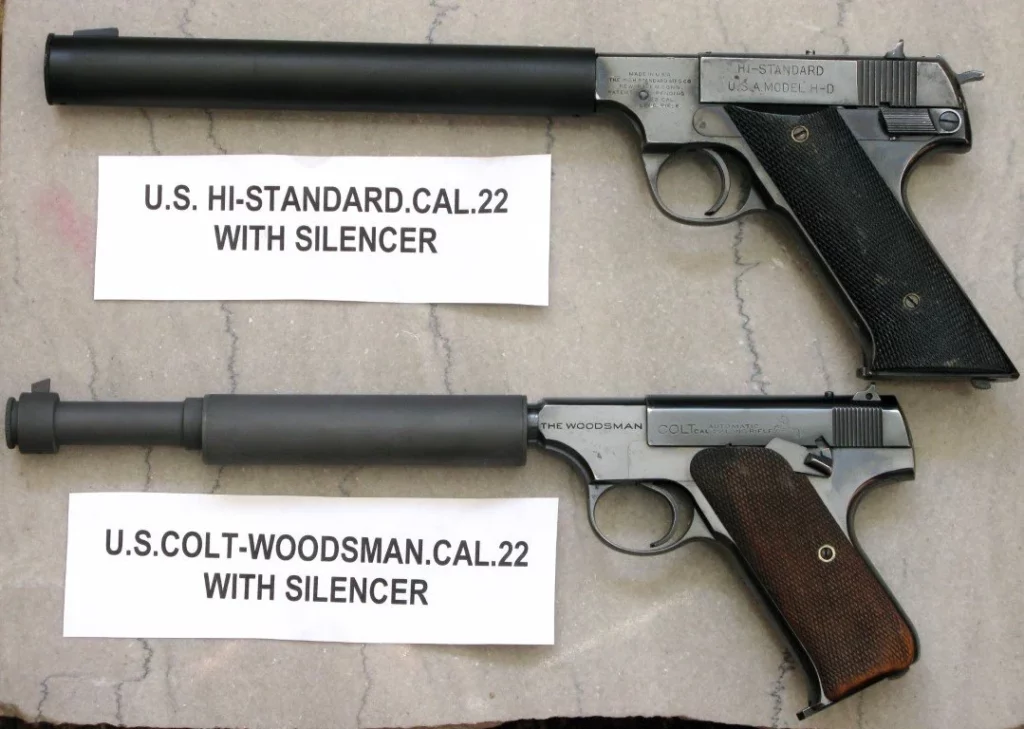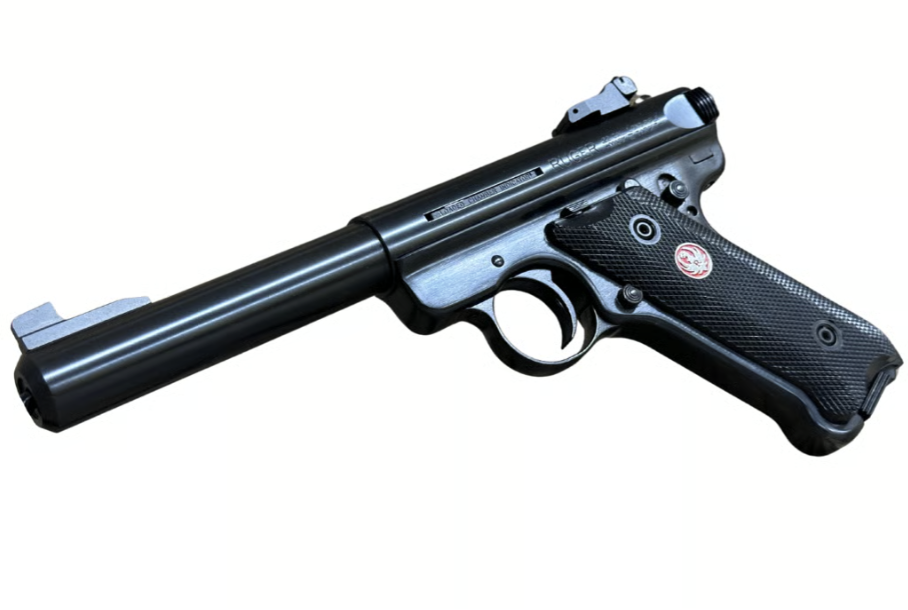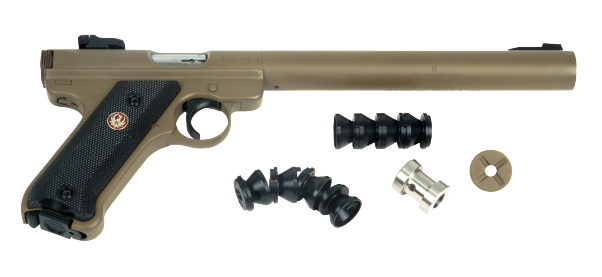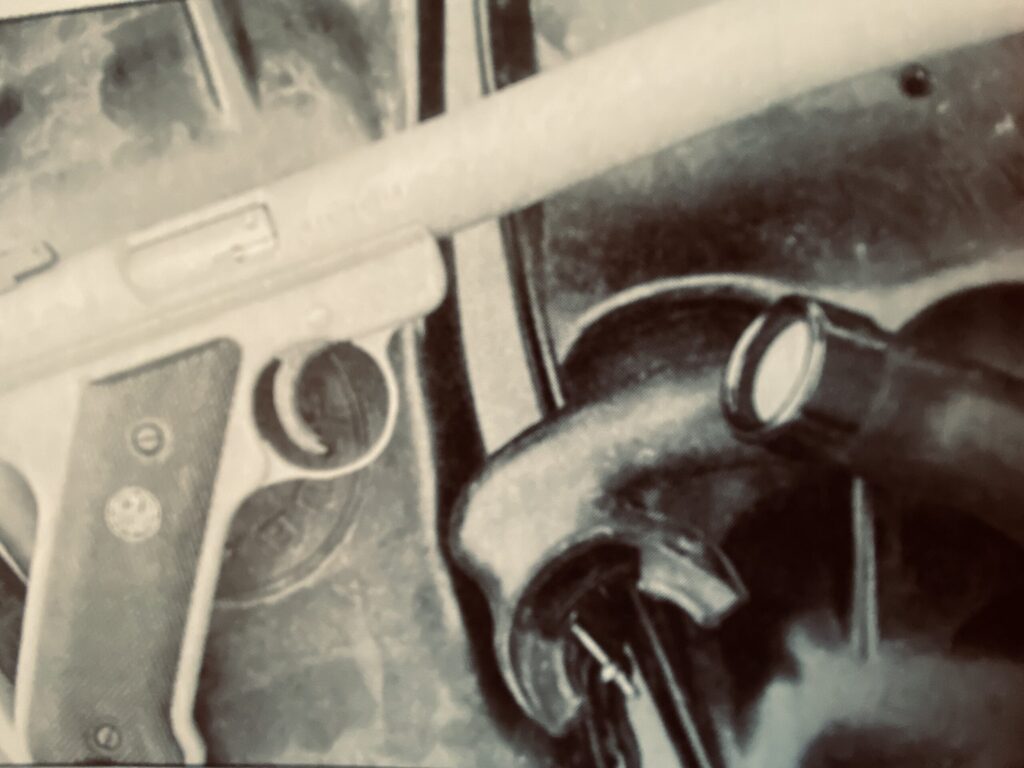There’s something fascinating about the gear used in covert operations, especially during the Cold War era. Back when technology was analog and assassinations were analog-er, specialized tools like suppressed .22 pistols weren’t just clever—they were mission-critical.
Today, the idea of using a .22 LR for clandestine work may seem outdated, even laughable to some. But the truth is, when paired with the right platform and effective shot placement, the humble rimfire round can be deadly effective.
This 1993 article from Soldier of Fortune is a relic in the best sense—packed with practical data, field testing, and insight that still holds water (pun intended) today.
The AWC Amphibian was ahead of its time, and many of its design cues still influence modern suppressed systems.
So instead of reinventing the wheel, we decided to give this archived gem a modern facelift, preserving its tone and context while enhancing it with web-friendly formatting.
Whether you’re a suppressor geek, a rimfire pistol collector, or just here for a dose of vintage clandestine cool, this is worth the read.
A Legacy of Quiet Precision
The sound-suppressed .22 Long Rifle (LR) semiautomatic pistol rose to prominence during World War II.
Clandestine OSS (Office of Strategic Services) operatives were equipped with early models like the Colt Woodsman, which featured an off-center suppressor housing and a barrel extension to accommodate standard front sights.

Eventually, the High Standard HD pistol became the suppressed weapon of choice, adopted by both American and British covert units.
Famously, Captain Francis Gary Powers carried one of these during his ill-fated U-2 spy flight over the Soviet Union in 1960.
Reports suggest that the High Standard HD remained standard within the CIA until the early 1980s.
Why Choose a .22 LR for Covert Operations?
You might wonder—why opt for a small-caliber rimfire round in life-or-death operations? The answer lies in the cartridge’s naturally low recoil and muzzle blast.
Suppressors work by mitigating the muzzle blast, which is governed by physics: reduce the pressure, volume, or temperature of escaping gases, and you reduce sound.
Don’t sell the .22LR short (no pun intended). Outside of military and law enforcement circles it has done, and continues to do, great execution, albeit not always swiftly.
Key advantages of the .22 LR include:
- Low-pressure cartridge = easier to suppress
- Abundant blowback pistols = simple operation, fixed barrels
- Ideal for close-range sentry removal
Many blowback .22 pistols can accommodate suppressors without interfering with reliable cycling, unlike locked-breech pistols, which often require recoil boosters when suppressed.
Ballistics & Terminal Effect
- 36-grain hollow points can expand to .30–.35 caliber and penetrate up to 9 inches of soft tissue.
- 40-grain roundnose projectiles penetrate approximately 13.5 inches and often yaw 180°, creating wider wound channels.
While marginal for combat use, these ballistics are sufficient for headshots in close-quarters sentry removal scenarios.
The Amphibian System by AWC
Designed specifically for clandestine “wet work” (a term borrowed from the Russian mokrie dela), AWC’s Amphibian integrates a suppressor and pistol system built on the Ruger Mark II.

Key Features:
- Fixed barrel blowback design
- 304 stainless steel construction
- Proprietary baffle system
- Fully functional in dry or wet environments
- Entirely maintenance-capable without disassembly
Though inspired by amphibious warfare needs, the Amphibian also excels in desert environments.
There are three sound-suppressor designers that have truly dominated the field in recent years. All are located in the United States. All have produced sound suppessors far ahead of their competition, anyplace in the world. One has voluntarily dropped out of the picture. Another deals almost exclusively with government contracts. The third, AWC Systems Technology, has designed and produces a wide array of state-of-the-art sound suppressor technology for federal agencies, military organizations, and law enforcement groups.
Suppressor Tech Breakdown
The Amphibian suppressor does not rely on mesh packing or wipes.

Instead, it uses a baffle system with aerodynamic environmental cells to cool and slow gas expansion, dramatically reducing noise.
- Standard Ruger Mark II pistol: ~154–155 dB
- With Amphibian suppressor (std. velocity ammo): ~107 dB
- With high-velocity ammo: ~108–109 dB
- Net suppression: 46–48 dB
- Flash signature: Eliminated completely
Sights & Specs
- 0.125-inch black-oxide blade front sight
- Matching 0.125-inch adjustable square-notch rear sight
- Overall length: 13.7 inches
- Weight (loaded): 43 oz
- Finish: Flat matte black
Ammo Compatibility
Special barrel tuning allows it to keep even high-velocity ammo subsonic.
However, hyper-velocity loads (like CCI Stinger) are discouraged due to only marginal ballistic gains and significantly louder reports.
Tested and functioned flawlessly with:
- Remington High Velocity
- Winchester High Velocity
- Remington Pistol Match
- Winchester T22 Standard Velocity
- Federal Hi-Power .22s
Accuracy & Maintenance
At 25 yards, using a sandbag rest, the Amphibian grouped 1.5 inches with Remington Pistol Match ammo.
No need for full disassembly. Simply spray a solvent (WD-40, Hoppe’s No. 9, or Break Free) into the suppressor and let it drain. After ~500 rounds, field strip, clean, and relubricate.
Final Thoughts
Whether you’re:
- Emerging from the surf in full scuba kit
- Plinking soda cans in your backyard
- Or fantasizing about Cold War-era spycraft…
…the AWC Amphibian is a testament to rugged, reliable, and nearly silent rimfire performance.
It’s quiet, deadly, and surprisingly accurate—even by today’s standards.
Enjoyed this retro review?
Do you miss the 90s gun culture as much as I do?
If you liked this blast from the past, let us know in the comments below — and we’ll keep the reformatted retro reviews coming.
Read the full article here



